For the first time this year I noticed pea sized fruits on my magnolia tree and I wondered – will magnolia seeds grow and how do I go about it?
Commercial propagation by layering is generally more successful and creates magnolia trees of flowering size quicker than by seed. In the wild, however, dispersal by seed is the norm so it’s always worth a try.
Do the seeds need a period of chilling and should they be separated from the fleshy fruits? Here I show how to prepare the seeds to plant next spring.
Magnolia tree seeds
I have two magnolias in my garden, a magnolia soulangeana and a magnolia kobus. Both these trees are species varieties. This is important as named hybrids are unlikely to come true from seed and may be sterile.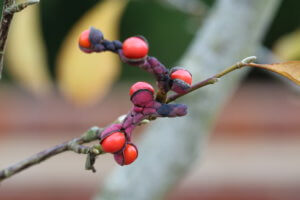
I have never noticed ripe seed on either tree but this year some fleshy fruits were clearly visible on the Kobus. Otherwise known as the Northern Japanese Magnolia or Kobushi Magnolia, this tree is native to Japan and Korea. I chose it for its beautiful white flowers, which aren’t particularly large but are stunning in form.
Since summer, I have noticed pink narrow cone-like structures. These have developed previously but for the first time this year, bright pink spherical shapes also developing. These split in late October to reveal red fruits.
Understanding Magnolia seed dispersal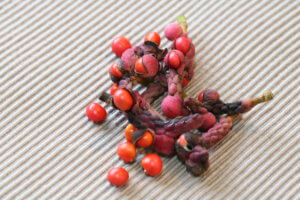
The colour contrast of pink and red is very appealing. No doubt our feathered friends also had their eyes on them and with good reason. Magnolia seeds are dispersed in the wild by birds. Indeed any seed encased in a fleshy fruit is likely to be dispersed this way.
It’s useful to understand this as it guides how people can mimic naturally occurring processes to prepare seeds for germination.
Finding the seed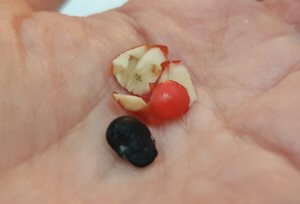
In the wild, the fruits would be eaten whole by a bird and then excreted out some distance from the parent tree. The bird will have digested the fruit, leaving the hard black seed behind in its poo.
I collected my seed and then used my finger nails and a knife to scrape away the fruit. The flesh of the fruit is white underneath the red skin, and is fairly firm. Removing the flesh is a fiddly but not unpleasant task as the flesh has a citrus scent.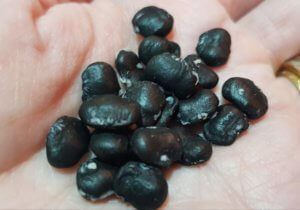
Each fruit contains one seed. The seeds are jet black and shaped like a tiny flat broad bean. I soaked the seeds for a while in warm water to help clean the remaining white flesh from the seed.
Chilling the seed
Back in the wilds of Japan, the magnolia seed will not start germinating as soon as it leaves a bird’s backside. Instead, winter will set in and the seed will experience a period of cold weather before it starts to sprout in spring.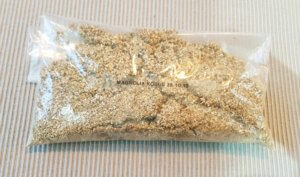
We can mimic this at home by chilling the seed in a fridge for a three month mock winter. The seed should not be allowed to dry out so placing the seeds in a bag of moist compost or vermiculite will ensure they stay in peak condition. This process is described in many books as stratification.
Planting the seeds
After 3 months in the fridge these seeds will be potted up individually in pots of compost. I will keep them somewhere fairly warm, probably in my greenhouse but equally a warm windowsill would do and keep my fingers crossed that some will germinate.
Alternative method
Some fellow gardening bloggers have contacted me to say they haven’t always had good results with fridge based chilling. It’s possible that the constant temperature of a fridge doesn’t adequately mimic the winter temperature variations of the parts of Japan and Korea where these grow.
A suggested alternative method is to plant the seeds in pots of sharp sand, or a sandy compost mix and leave them outdoors for the winter.
I have decided to try this method as well and report back next year to see which (if any) germinated.
Even if they germinate, it will take at least 10 years for a tree to reach a decent flowering size. Growing magnolia from seed is a long and uncertain game but the tree has gifted me these seeds and I feel it’s worth a go.

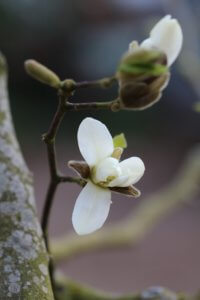
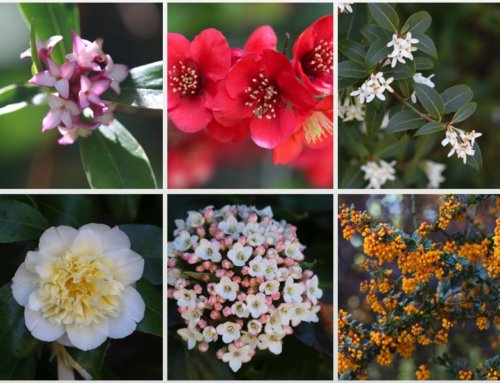
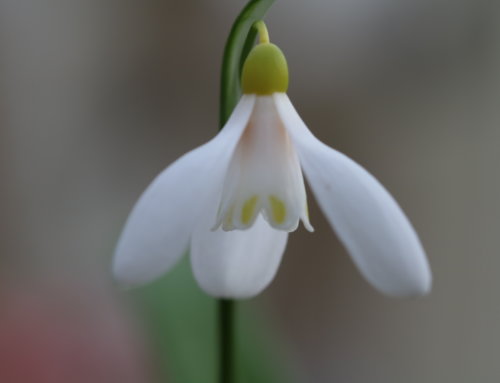
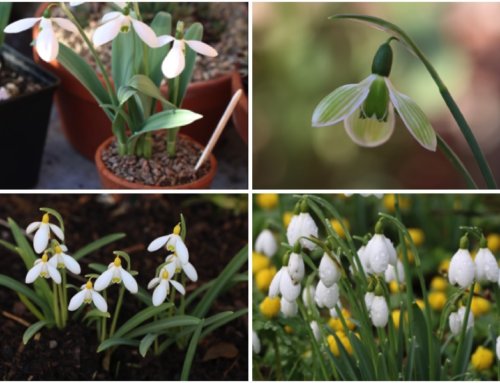
I’ve grown lots of magnolias from seed by exactly the method you describe, 3 months in the fridge. They’ve germinated very well in every case. I went for the coldest part of the fridge, above freezing but only just.
Hi Jim – thanks that’s given me some confidence that the seeds will germinate. I’ve turned my fridge down a bit. I’m lucky that we have a second small fridge (where my husband keeps his beers!)
I also recently germinated some seeds and now I have 12 baby magnolia trees. So exciting!!! I can’t believe it worked for me. Anyone know how young they can be planted outside in the ground? I live in Vancouver BC.
That is so exciting! I would have thought you should grow them on for a year or two in a pot but if you haven’t got the space to be doing that or are worried you’ll not look after them then why not try planting some out? When I have multiple plants I usually do a bit of both – hedge my bets!
I’ve hybridized magnolias and this is an excellent way I’ve used to guarantee germination. I’ve taken bags out of fridge and put on a seed tray heating mat. That works well too. To get seeds going before planting. Good luck. One of my hybrids I crossed blooms end of February and is registered and named Spring Dawn.
That’s a great tip to germinate on a heating mat. I just planted mine in modules and they’re a bit slow but are on their way. Congratulations on you hybrid to name and your choice of name is a great one.
Hi Katherine, How are your magnolias doing? Do you have any new pictures?
Hi Christine – they grew pretty well but then I had a disaster when I went on holiday and they weren’t properly watered. I think I will try again but they did germinate last time at least!
Absolutely fantastic information. I have a magnolia in my garden. The villagers say it dates back approximately 75 years and at little over 8 feet, it remains an absolute icon in its surroundings! Reading this post, I’ll be sure to start collecting my seeds this year and giving it a go next!
[…] “Sources” https://www.gardeningknowhow.com/ornamental/trees/magnolia/propagating-magnolia-seeds.htm https://todayshomeowner.com/how-to-grow-magnolia-trees-from-seed/ https://homeaffluence.com/how-to-grow-magnolia-tree-from-seed/ https://homeguides.sfgate.com/sprout-magnolia-seed-37543.html https://www.doityourself.com/stry/how-to-grow-a-magnolia-tree-from-seeds https://www.scottarboretum.org/magnolia-seed-harvesting/ https://teabreakgardener.co.uk/growing-magnolia-from-seed/ […]
The soulangeana is my favourite “first sign of spring”. I find the blooms simply breathtaking and am hugely attracted by the sheer romance of the idea of growing one from seed. The sheer sense of triumph after a decade of patient observation and care must be amazing.
This post is very exciting indeed. I bought two small saplings in the spring but the very hot British summer was too much for them and they are essentially indistinguishable from their respective support canes (bark notwithstanding). 😱
However, I am struggling to source the seeds. All the suburban garden centres I have visited do not seem to routinely sell them. (I’m getting a bit fed up of being stared at with the expression that tells me this is a stupid question.) Any advice?
Hi Simon, that’s a very good question but I have never looked out for seeds for sale. As I understand it, magnolias propagate well from air layering so vegetative propagation explains the lack of seed sales I should think. You could look out for seedpods on magnolias in your neighbourhood maybe?
I live in Massachusetts my magnolia tree has no leaves on it. The summer was very hot this year did water my tree but lost all its leaves in august. Has it died usually see flower buds on it now for the spring.
Hi Barbara, That is sad to hear. I’m not sure if it’s dead or not but as there are no buds it certainly won’t flower. when such things happen to me I always wait to see if the plant will recover in the spring. It’s only then that you will know for sure. I hope it come back for you.